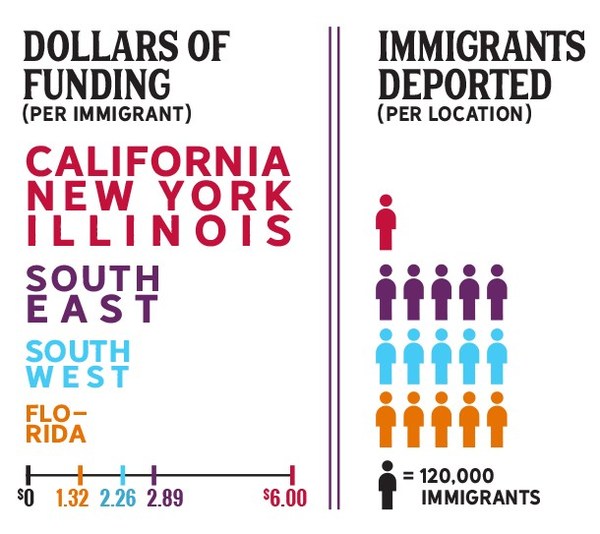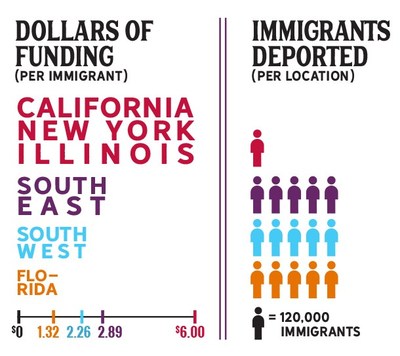


WASHINGTON, April 30, 2019 /PRNewswire/ -- One out of every five residents in Florida is an immigrant. Yet, with an anti-immigrant bill making its way through Florida's state legislature, it could become one of the most anti-immigrant states in the country.

A new study found that despite the increasing threats to Florida's immigrants, the country's top grantmakers have not prioritized the state's immigrant justice movement.
Hundreds of foundations gathering in Miami this week for the Council on Foundations' annual conference have an opportunity to sharpen and deepen their commitment to a future where all communities – including immigrants and refugees – thrive.
A history of under-investment
Research by the National Committee for Responsive Philanthropy (NCRP)'s new Movement Investment Project indicates that in the years prior to the 2016 elections, barely 1% of grants by the largest 1,000 U.S. foundations was intended to benefit immigrants and refugees.
Only a very small portion of that foundation funding went to states and regions where the threats to immigrants and refugees were highest.
For example, Florida sees almost six times as many deportations as New York or Illinois and yet received only a fraction of grant dollars per immigrant.
The state's grantmakers accounted for 33% of the total funding for Florida's immigrant justice movement. Foundations outside Florida accounted for the rest.
"The history of this country shows that systems like racism and xenophobia can only be changed through diverse and courageous segments of our society, including philanthropy, supporting vibrant social movements led by those most affected," wrote Maria Rodriguez, executive director of Florida Immigrant Coalition, in a commentary for the Miami Herald.
Promising sign
During the first half of the Trump presidency, NCRP's small, but representative, sampling of pro-immigrant groups across the country found that more than 60 foundations that had not funded the movement in previous years provided new grants to these groups in 2017 and 2018.
However, the "State of Foundation Funding for the Pro-Immigrant Movement" found that the movement's new funders represented only a fraction of philanthropic dollars going to pro-immigrant movement groups. About 90% of 2017-2018 foundation funding in the NCRP sample set came from existing movement funders giving larger grants.
NCRP's extensive interviews with movement leaders as well as quantitative data from Foundation Center identified a large gap between the small pool of funders and the urgent and long-term threats that immigrant communities face.
According to NCRP, there are two specific areas where philanthropic investments can go a long way to fill these gaps:
Opportunities for foundations and donors to invest in a vibrant, inclusive future
According to the NCRP's research, pro-immigrant movement leaders have five recommendations for funders:
"Philanthropy can't stay on the sidelines as community-powered organizations are holding the line, working to move us closer towards a safer, healthier and stronger future," said Aaron Dorfman, chief executive of NCRP. "Funders need to seize the moment because a country where immigrants thrive is one where we all thrive."
About the Movement Investment Project
NCRP's Movement Investment Project is a multi-year initiative that will help grantmakers and donors understand the relationship between their giving and the success of social justice movements at the center of critical national debates. The focus for the project's first year is the pro-immigrant and refugee movements.
About NCRP
For more than 40 years, the National Committee for Responsive Philanthropy has been amplifying the voice of nonprofits and the communities they serve in the philanthropic sector. Through research and advocacy, it works to ensure that grantmakers and donors contribute to the creation of a fair, just and equitable world. For more information, visit www.ncrp.org.
SOURCE National Committee for Responsive Philanthropy
